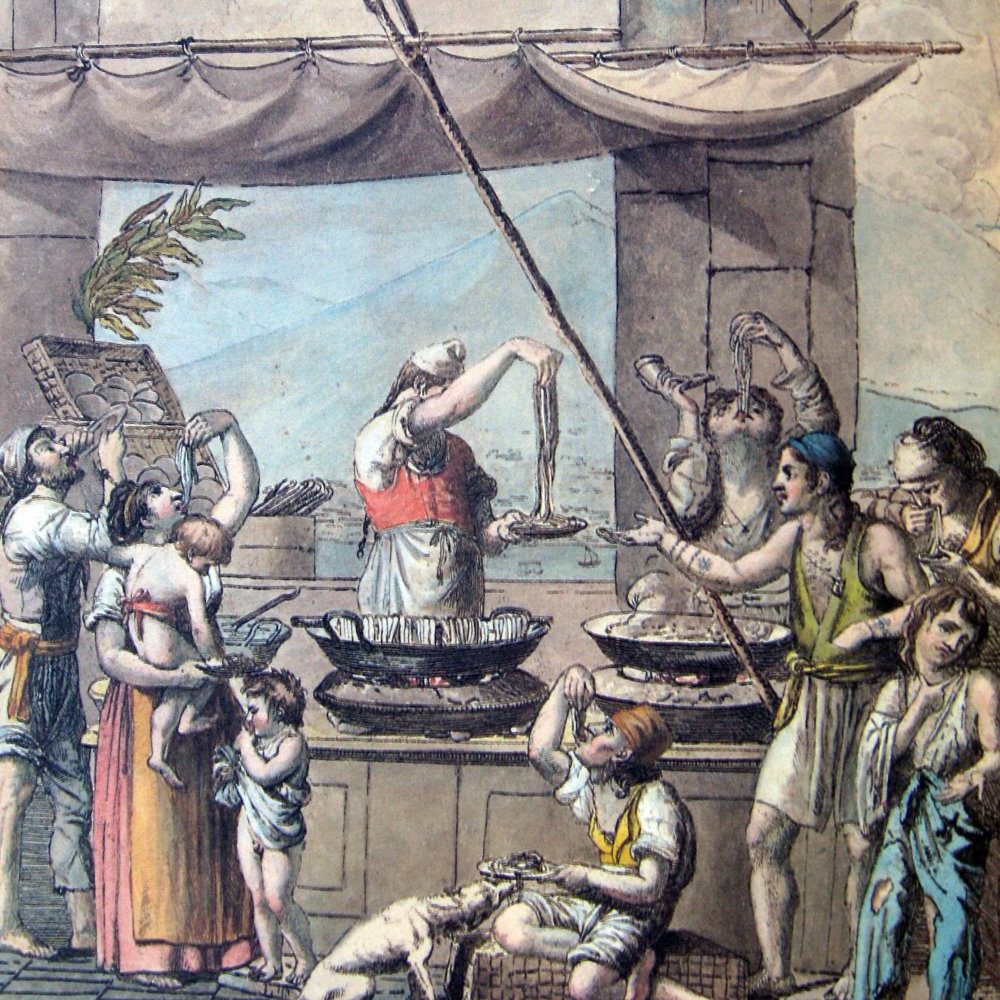We put together a list of some old hygiene facts that would make anyone thankful they’re living in the modern age — even though some of these old hygiene habits are still in use! Check out the bizarre ways people used to get clean and overcome illnesses: some of these are gross, some of these are morbid, and all of these will surprise you.
Floral Coverup
We infuse the scents of flowers into perfumes and cleaning products because they smell so good to us. While scientific understanding and industrial manufacturing techniques have dramatically improved our ability to stimulate our olfactory glands with the touch of a spray or lighting of a candle, the love we have for these floral scents is nothing new. Ancient peoples, for example, used to use flowers to mask their unpleasant body odor with a bouquet held or tied close to their bodies.

Eating Chalk to Be Pale
While the rich and famous today all have gorgeous tans that show that they can afford to wallow around in the sun all day long, back in the day pale skin was a sign of wealth, as it meant you didn’t labor out in the sun. People would color their skin with makeup that would often poison them for the lead content, but also try to induce paleness by eating chalk. Even though it probably won’t work unless it makes you sick and you get pale, at least chalk’s less toxic!

Chamber Lye
Indeed, the only use we have for urine is for tests at the doctor or to treat jellyfish stings — which doesn’t work — but before we could use inorganic substances to synthesize chemicals such as ammonia, which is used to this day in cleaning products, we used to get them from an organic source: pee. Also known as chamber lye, aged and fermented urine (lant) was used as laundry detergent. Its use in tanning leather was perhaps the least stomach-wretching, as they also added it to ales and glazed it on pastries.
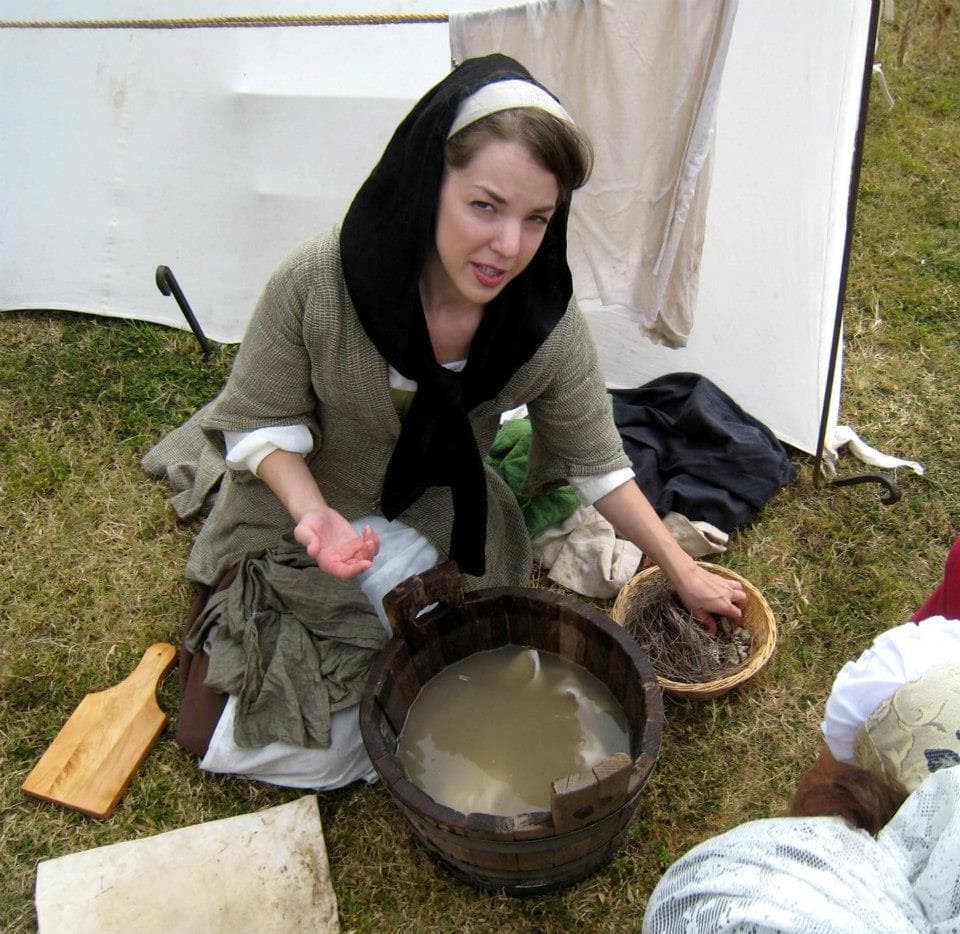
Mousy-White Teeth
Sodium bicarbonate, commonly known as baking soda, is used today by many toothpaste brands as the active ingredient for whitening products, but the fact is that this chemical compound has been known for this effect since ancient times. This one ingredient is sometimes the only thing toothpaste of different eras and cultures had in common. Although the Romans used it, for example, they preferred to mix it with mouse brains for a slightly different flavor than we’re used to.
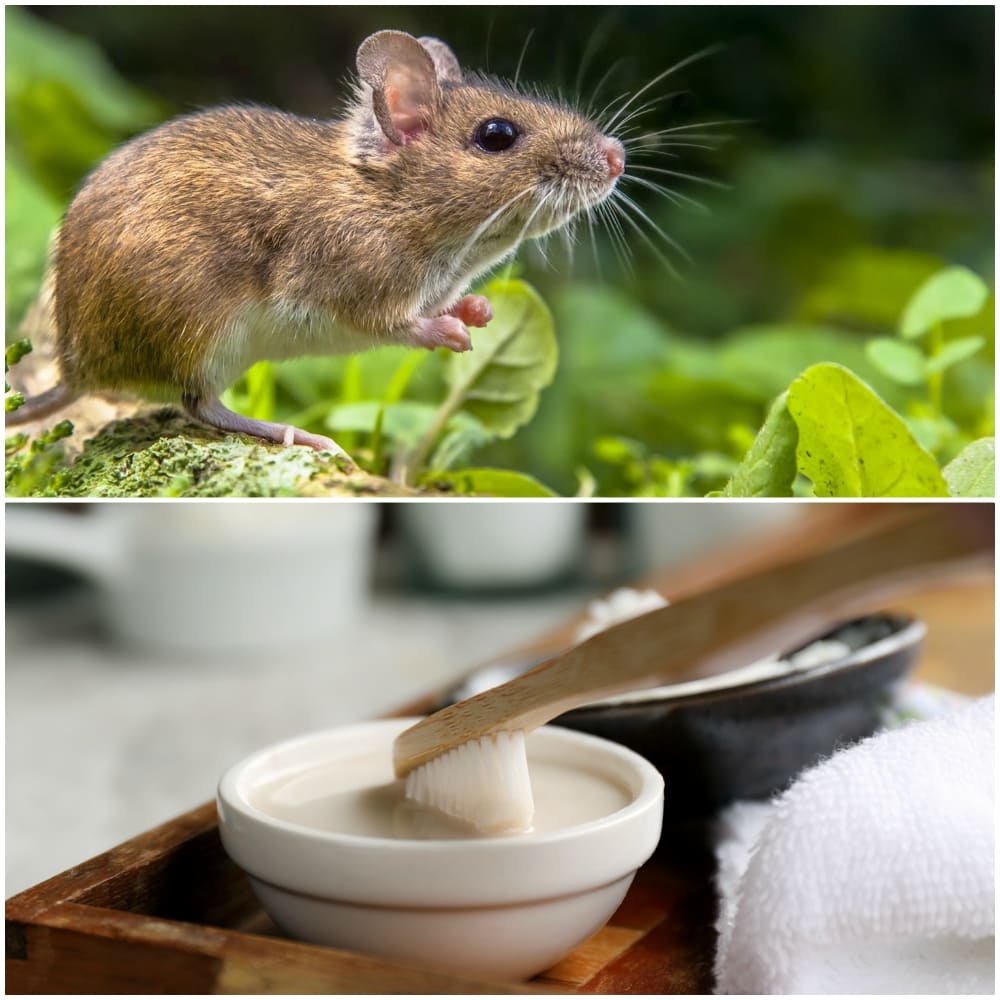
Reusing Bathwater
While the bathing habits of people differ as far as culture, place, and time, one of the worst times for body odor had to have been Europe at the end of the Middle Ages. People thought that bathing would help spread the Black Plague so they rarely bathed. When they did, however, the effort to heat that much water and concentrate put it all in one tub was such a hassle that the whole family would take advantage of the opportunity to bathe — but in the same water.

No TP
While there is definitely an argument to be had for why a bidet is better than toilet paper, having a dry solution to the same issue clearly solves many more emergencies. Not having it when you need it is something you shouldn’t wish upon your worst enemy, but there was a time when there was no TP. Back then, different cultures dealt with it in different ways: the Japanese had special sticks, while the Greeks and Romans used sponges at the end of sticks soaked in water or vinegar.
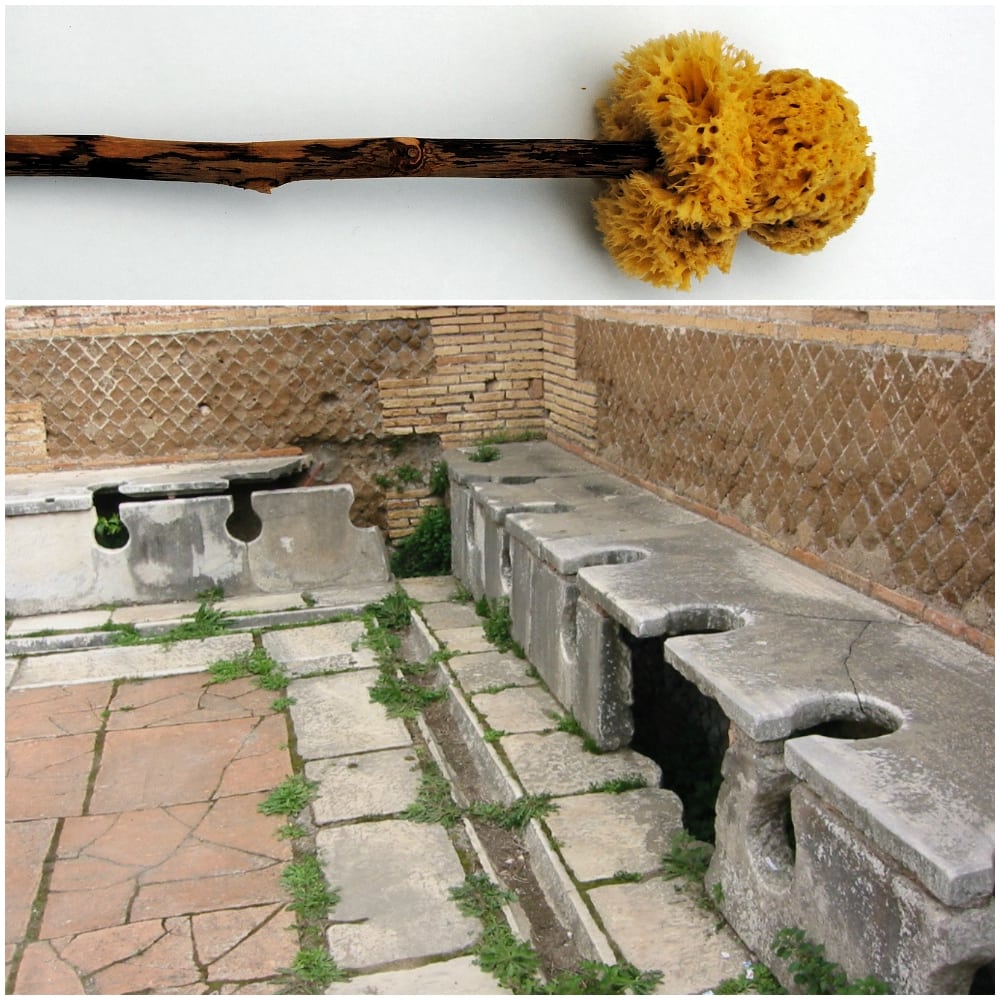
Only 4 Outfits
Even though the rich were able to afford many beautiful garments, depending on how rich they were, the poorer folk often didn’t have more than four outfits to their name. Before the industrial revolution and the explosion of the textile industry, starting in Britain, people had to make and mend their clothes by hand. They didn’t have the disposable income that we have nowadays and were unable to afford a closet full of clothes, so they’d dress in the same clothes until the seasons changed.
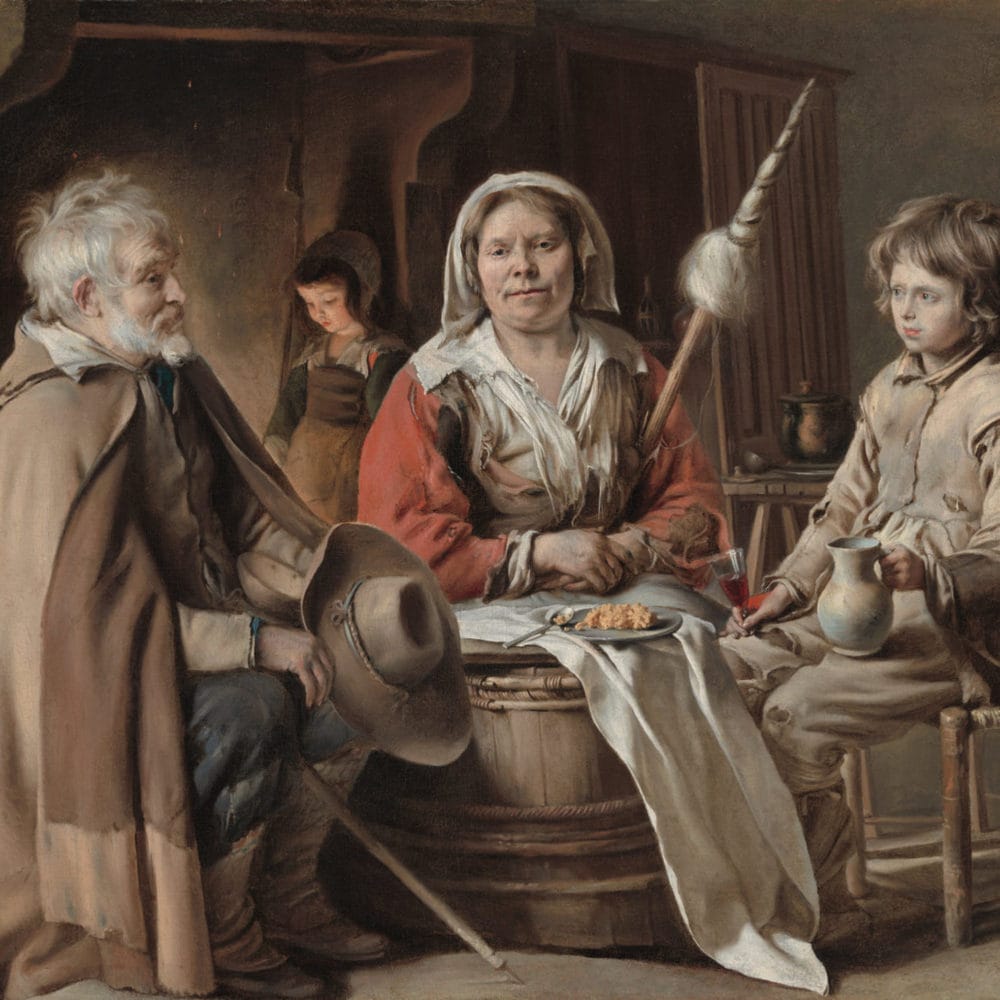
Crocodile Birth Control
Birth control methods have been around for millennia, but they’ve changed significantly. Surprisingly, an ancient Egyptian form of birth control was quite similar to the diaphragm. This barrier technique is effective by blocking off the uterus so semen can’t enter, and while latex and spermicide are used nowadays, the ancient Egyptians used crocodile dung. Besides the physical barrier that the dung provides, some have hypothesized that the crocodile poo also had spermicidal properties that helped it succeed as a contraceptive.
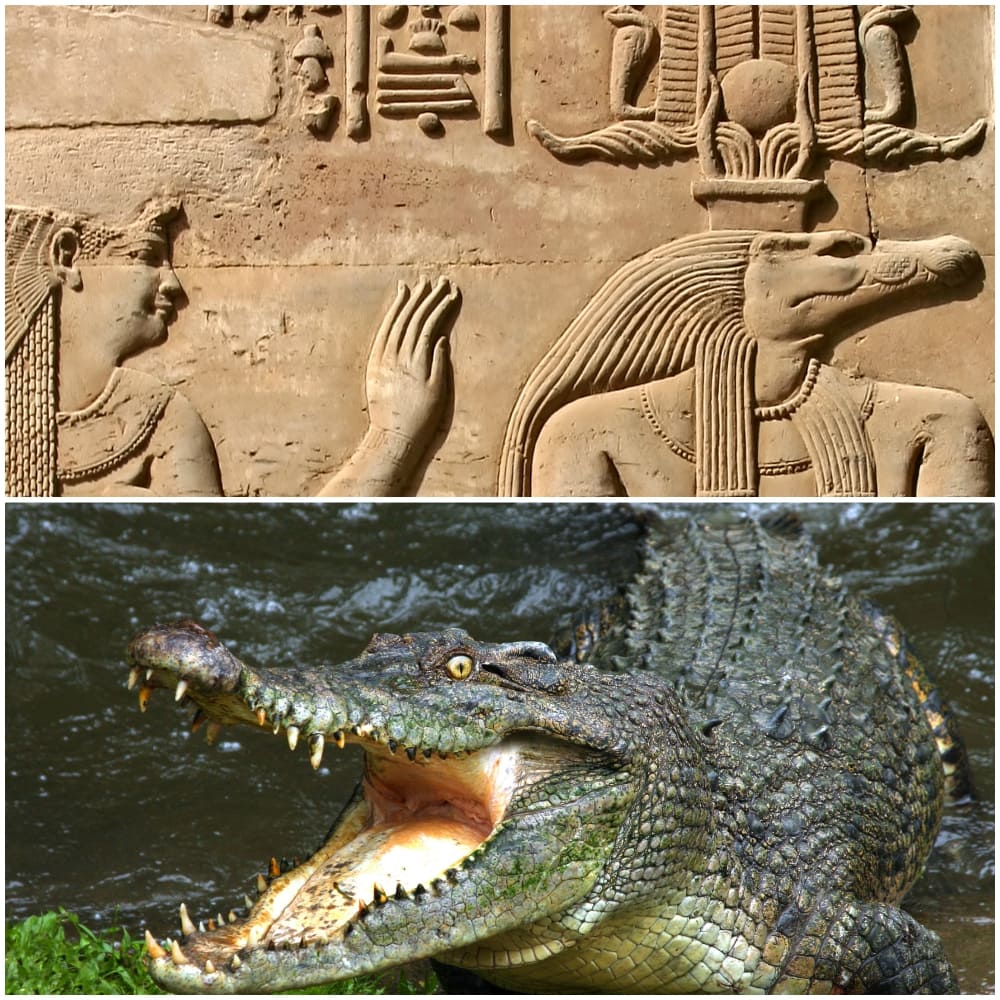
Powdered Wigs
Powdered wigs were all the rage for a long time, and British barristers still wear them as a vestige of a bygone age. For our health, though, it’s a good thing that these things fell out of favor because they were really unclean. For one, they were often covered in lice, but that’s not half of the danger. Animal fat such as lard would be used to style the wig, which would get all gross, and people didn’t use shampoo back then so it would get on and stay on their real hair. Ew.
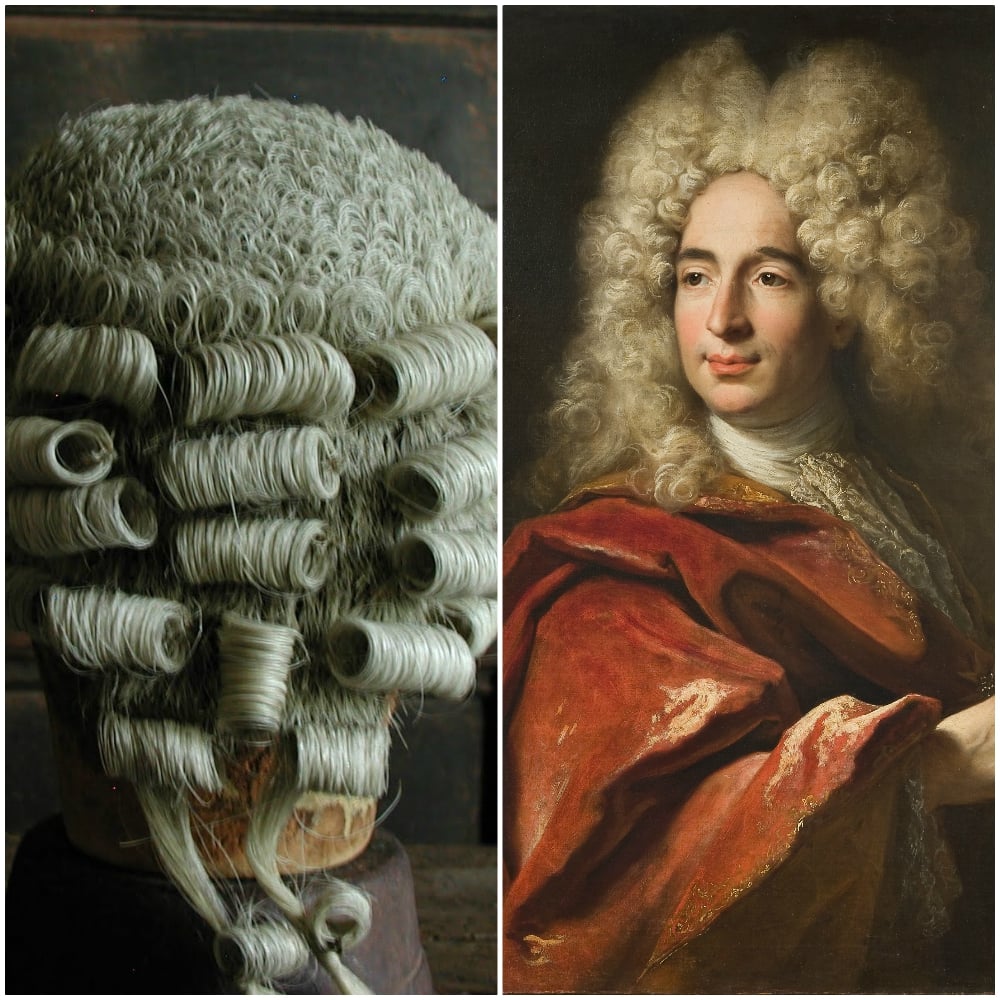
Moss Pads
There’s no doubt that revolutionary feminine hygiene products popularized over the past century and a half have had some of the most far-reaching consequences for modern societies, but there was a time when these products just didn’t exist. Dealing with menstruation was no walk in the park, and women had some creative ideas on how to deal with their periods. Moss was used as a pad since ancient times — surely you can find people today who also opt for this all-natural feminine hygiene product.
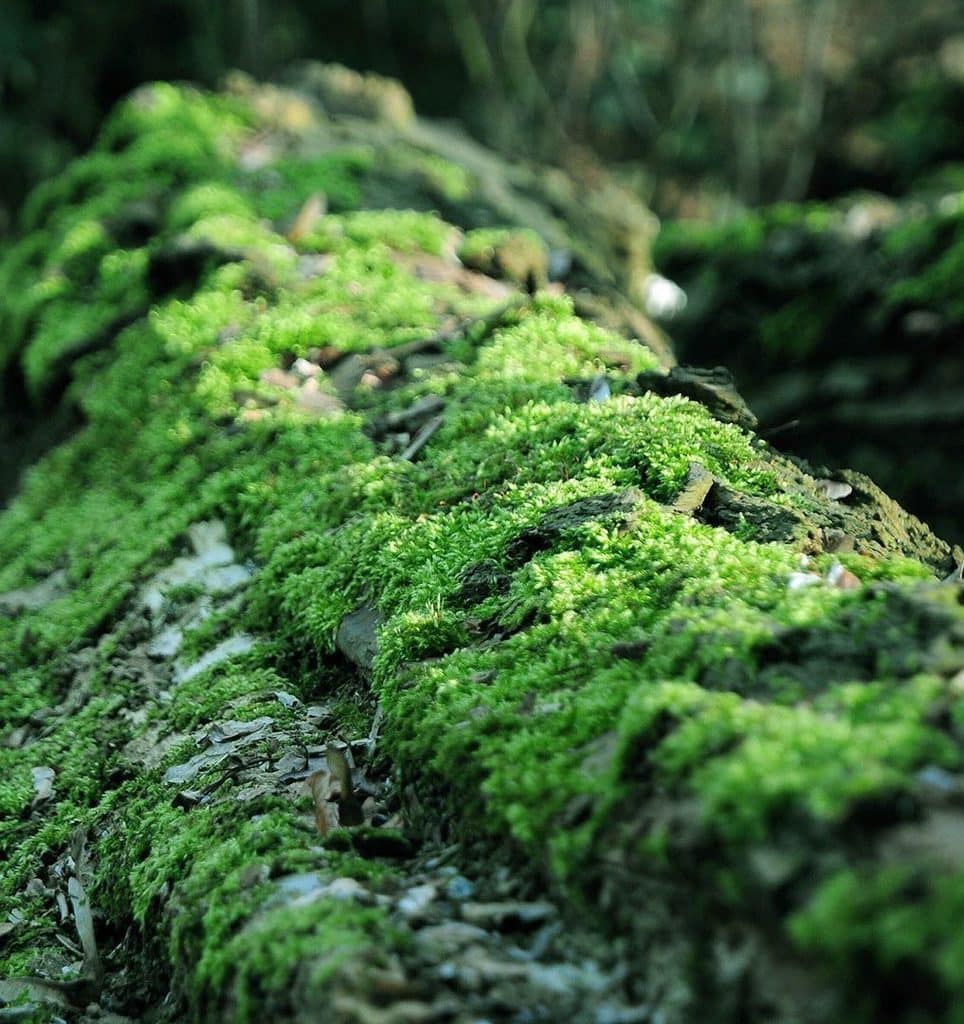
Deathly Shoe Polish
Shining shoes were often the dapper finishing touch on an outfit, but a common ingredient in shoe shine from a century ago, nitrobenzene, is toxic. It was great for shining shoes, yet it could cause someone to faint if they inhaled it. Passing out is the least of your concerns if you come in contact with this substance, as it affects the lungs, liver, and central nervous system. Indeed, it could even be fatal, particularly if someone had a stiff drink before.
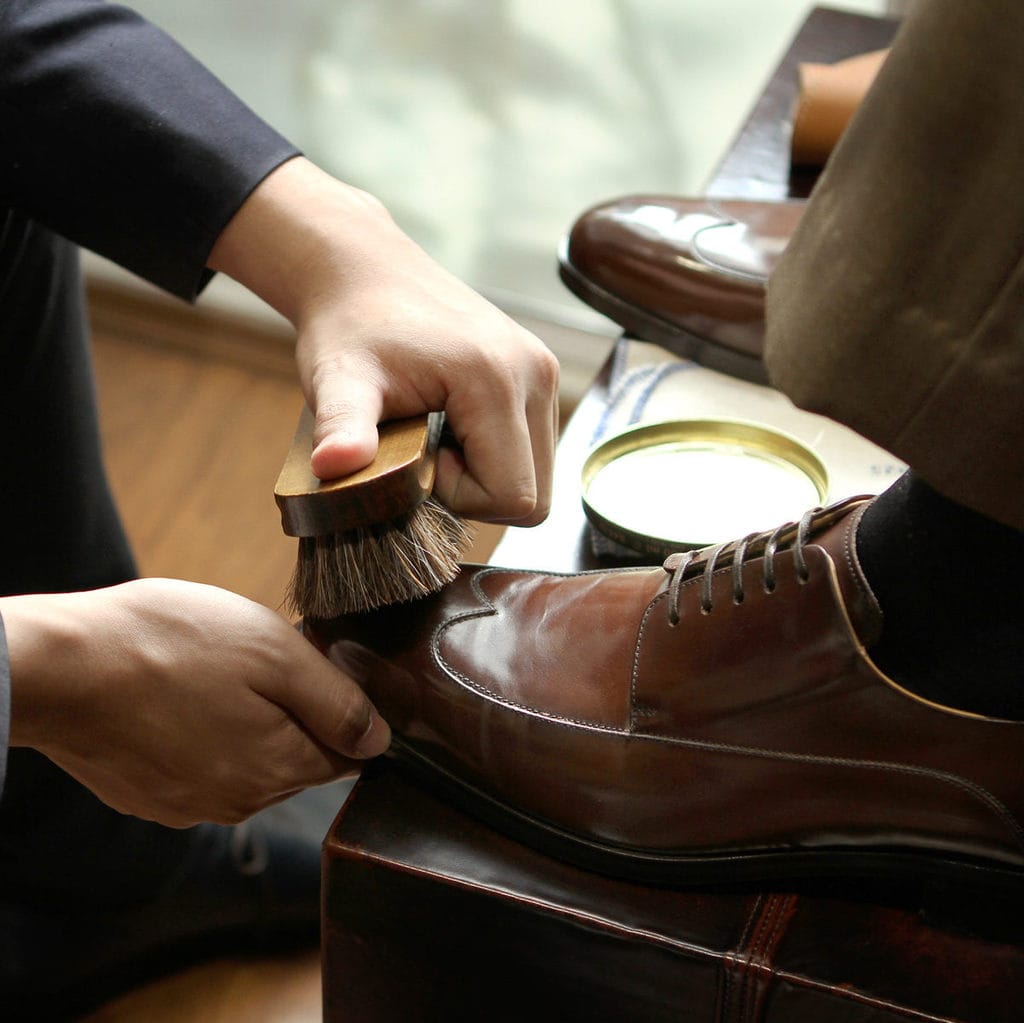
Dubious Medicinal Practices
The medical profession has in the past held on to many scientifically dubious beliefs in the past, and it seems like people would believe anything in the hopes of curing what was incurable back then. As disturbing as it sounds to us today, Europeans in the Middle Ages consumed human remains for medicinal purposes. Human remains were ground into powders that were supposed to heal many ailments. King Charles II had a special formula called King’s Drop, which was a tincture of human skulls.
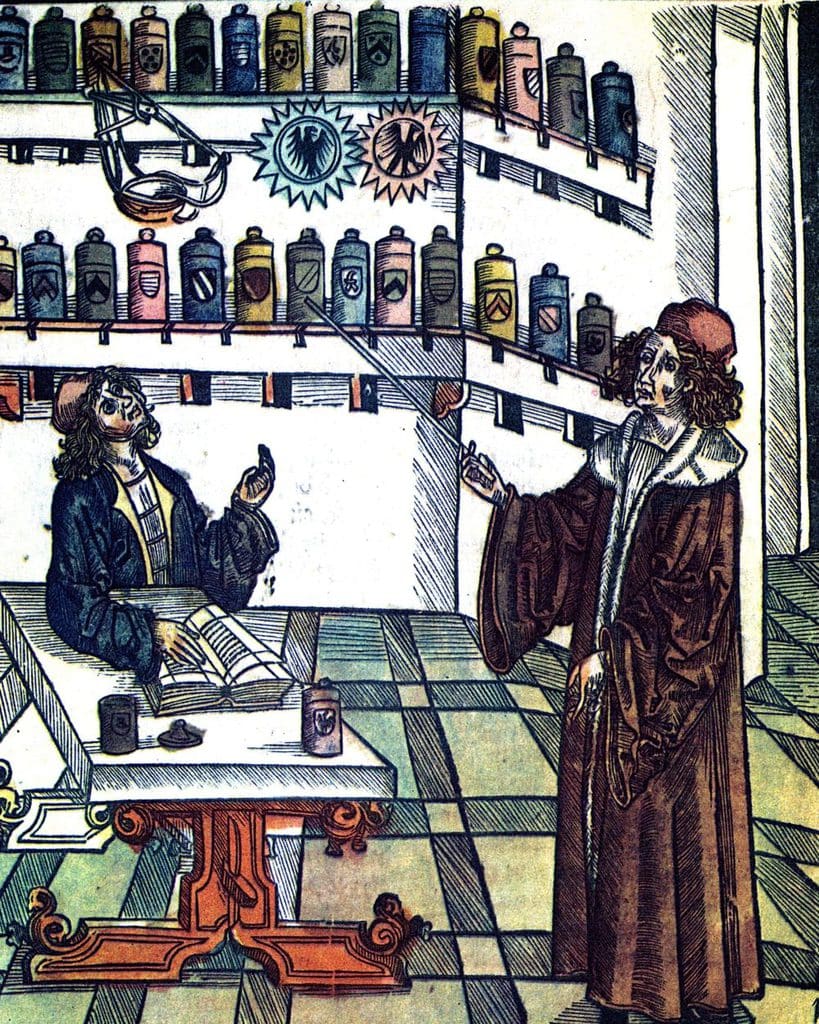
Lysol Lady Remedy
Lysol has been used to disinfect for over a century, but one thing many are unaware of is that it was once used as a feminine hygiene product to prevent unpleasant odors, as post-coital birth control, and as a disinfectant ahead of labor. Lysol also used to contain cresols, a type of organic chemicals that induce abortions, but very dangerously. Besides being toxic and causing kidney failure, it can also cause sepsis — an infection of the blood that is often fatal.
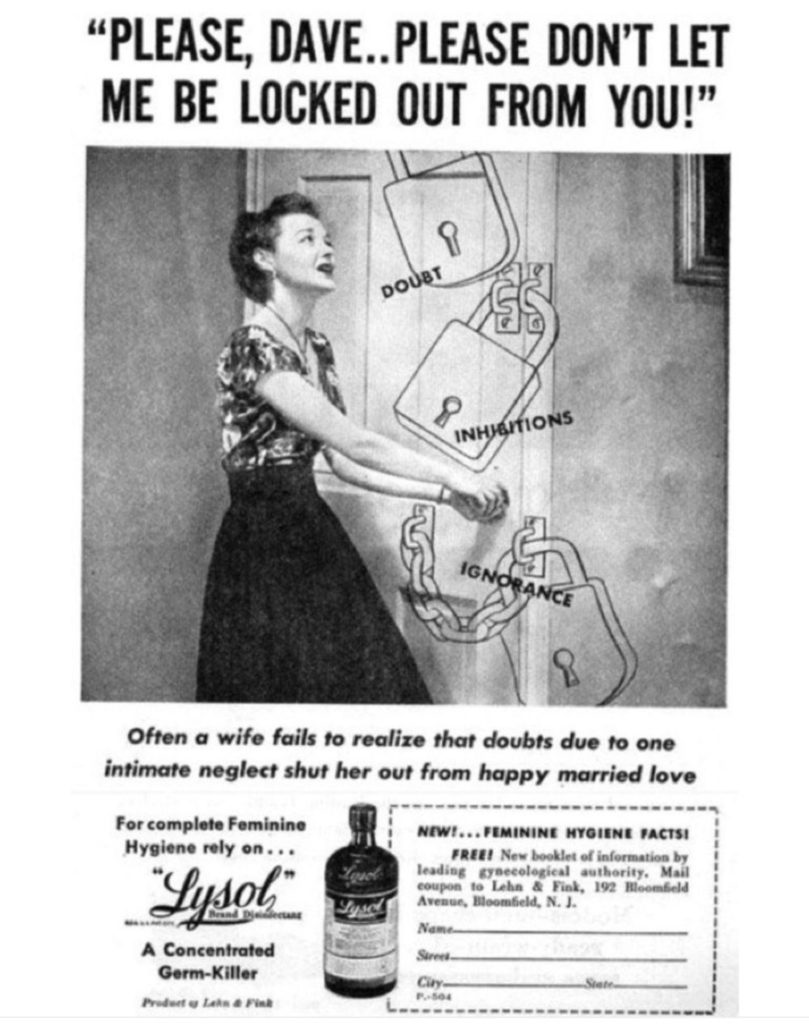
Rooster RoGaine
Today we have a bunch of different methods to prevent hair loss, from topical creams to restorative surgical hair implants. Although male pattern baldness is what you most often see, women can also experience hair loss as they get older. It’s not dangerous, but the psychological effects can be pretty harsh. Back in the day, it was treated by a mix of stuff including chicken droppings, so be glad you can just go to your local pharmacist and get something over the counter.
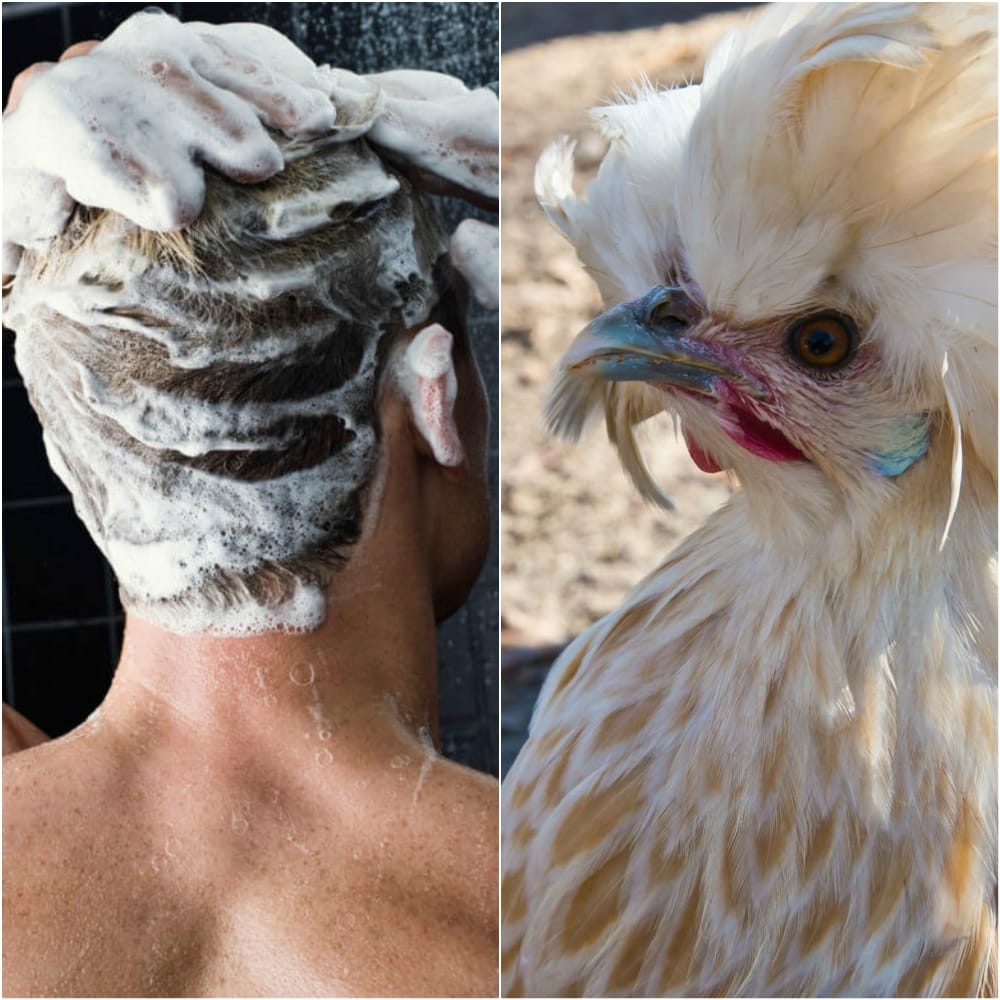
Dirty Surgery Tools
Microbes cause many diseases and ailments, but we actually didn’t know about this until fairly recently. Cleaning medical instruments didn’t really start until the mid-19th century, even though we first saw microbes in the 17th century because the disease-causing connection wasn’t widely known yet. Because the medical profession didn’t know the importance of sterilizing before checkups and surgery, doctors and surgeons didn’t always clean their tools as regularly as they should. That only began to be widespread in the 19th century.
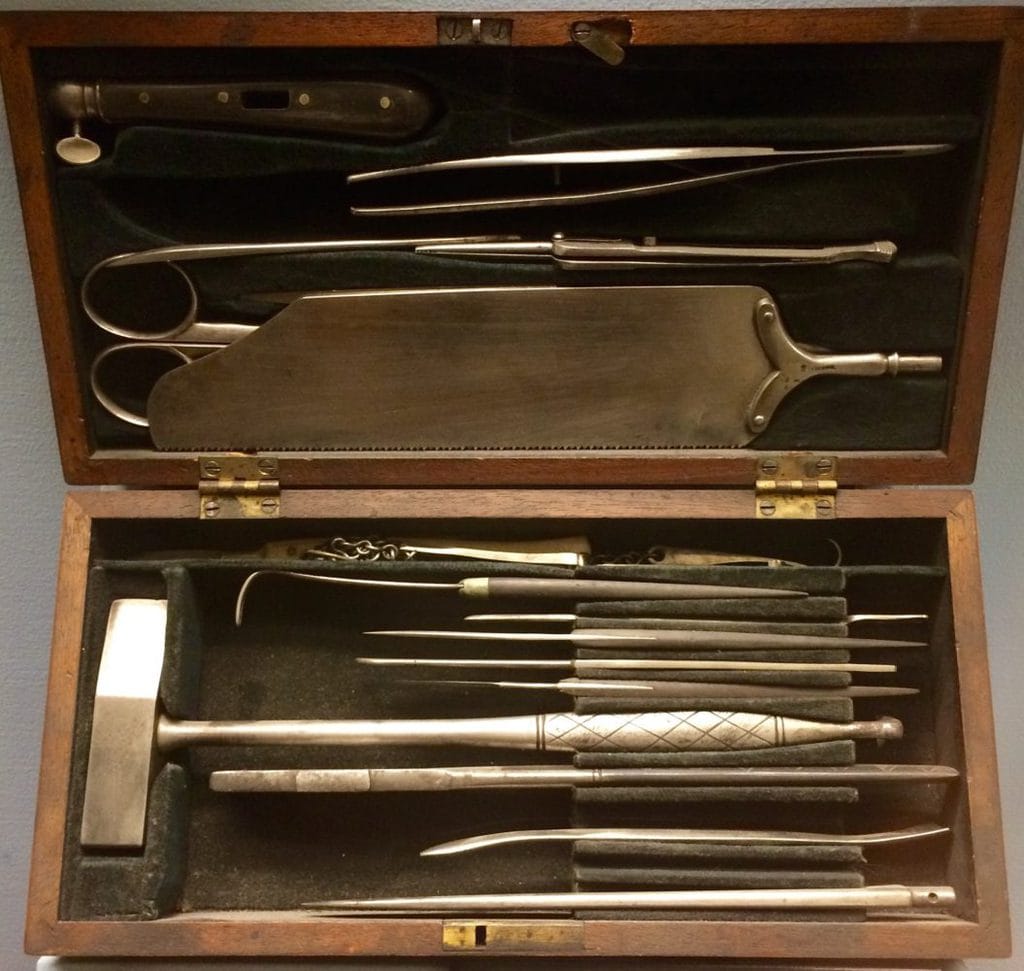
Beaver Fertility Beverage
In what may have been one of the least effective birth control methods, indigenous women living in modern-day New Brunswick, Canada, back in the 16th century believed that tea made from beaver testes would help prevent them from getting pregnant. We don’t know if this worked, but it is possible that the androgens (male hormones) found in beaver testes had a role in creating a hormonal imbalance in the woman that would stop her from getting pregnant. Or maybe it didn’t work at all.

Sulfuric Freckle Remover
Freckles are a natural, usually harmless pigmentation that occurs on parts of the skin that are exposed to sunlight. Despite their harmless nature, people have been trying to get rid of them for centuries, using pretty much anything on hand judging by the variety of cures. While things like morning dew probably don’t work too well at preventing freckles, sulfur might have been more successful in the day, as it’s an exfoliating agent that is used in acne medication today.
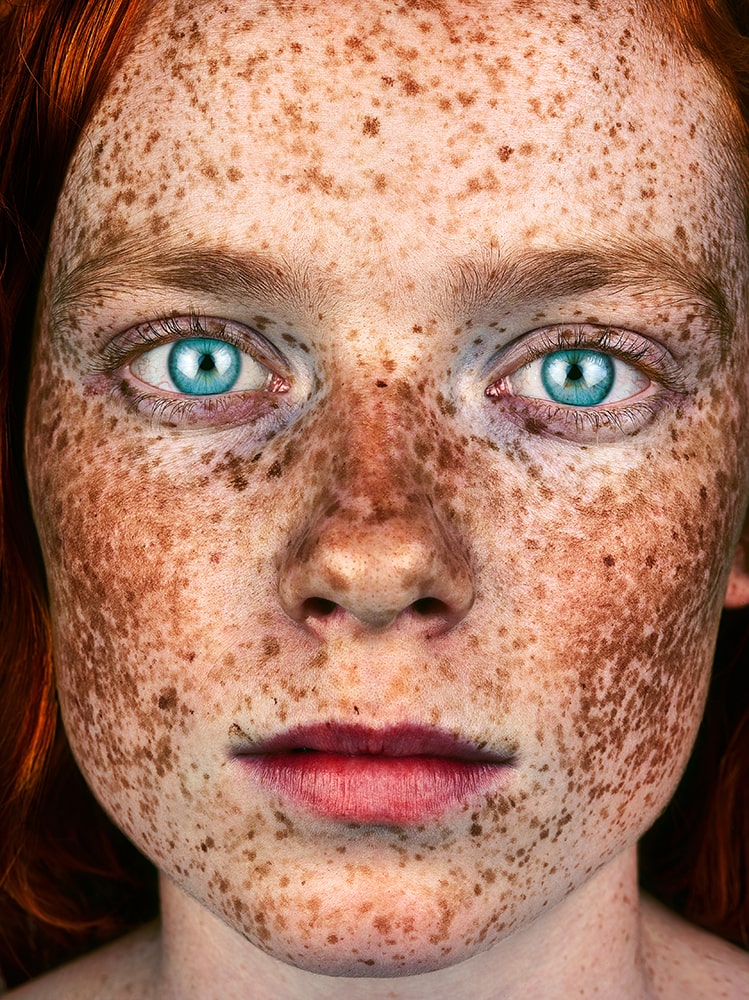
The Truth About Moats
Stories about knights, kings, and queens are enough to make you dream about living in the Middle Ages, but the truth is one look at sanitation standards of the day would turn you off. Moats, for example, were supposed to be a small body of water surrounding a castle to protect the people from enemies without. The problem was moats were a cesspool for disease-causing germs, which are humanity’s worst enemy from within. They were pretty much public sewers that people would toss human waste and food scraps into.

Barber-Surgeons
Barbers have been around forever, but their job description was just a little bit different back in the day. Up until the 18th century when the demands of medicine at the time split the profession in two, barbers doubled as surgeons, as cutting hair demands precise cutting skills and a range of tools that translated well to surgery. This included dental surgeries and blood-letting, an outdated medical practice based on a shoddy understanding of anatomy revolving around the four humors: blood, black bile, yellow bile, and phlegm.
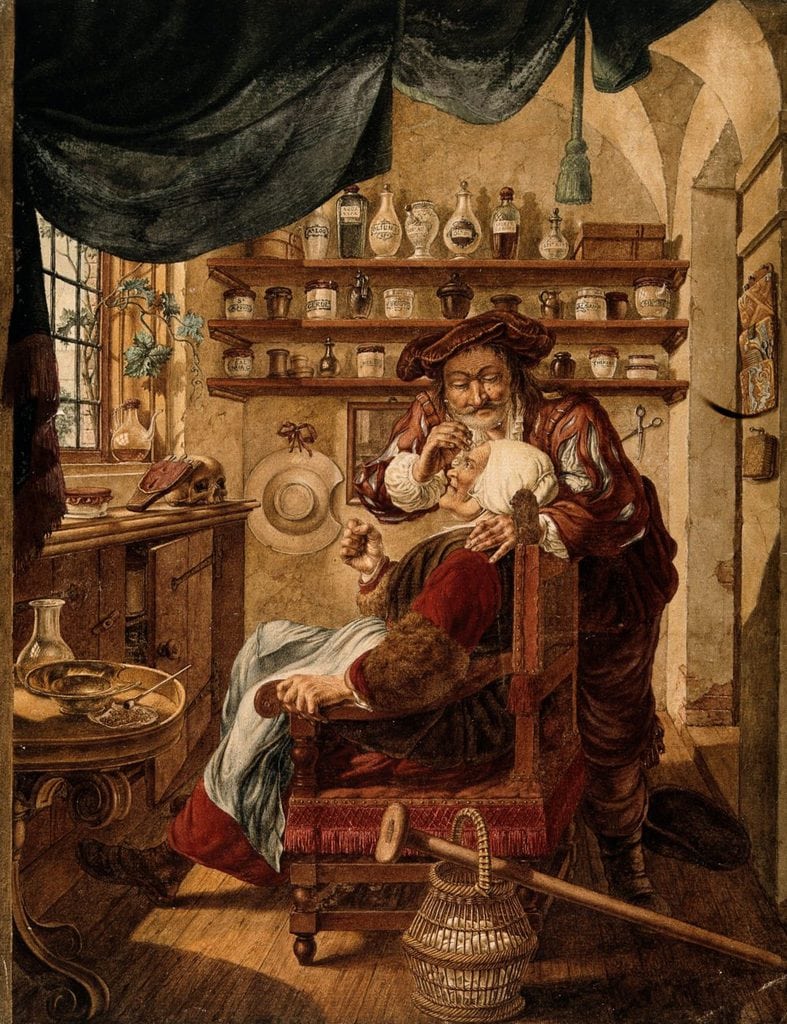
Strawbed Bathrooms
Floors are something that we take for granted in modern houses, as the ground used to serve as the floor. Even then people wanted some sort of barrier between them and the dirty, though, so they would use sawdust or straw in lieu of expensive and scarce wooden floorboards or marble. They would even use this in their bathrooms, which is pretty gross considering they wouldn’t switch it out: if the straw on top got too old, they’d just toss some more on there.

Strength of an Eagle
Animal excrement has appeared on this list several times, and the list of supposed benefits is really surprising. Eagle dung, for instance, was used to induce labor and ease the pain: a mixture with oil, vinegar, and eagle excrement would be given to a woman going into labor for these supposed benefits. Even among those nostalgic for the natural way things were done, including those opting for a natural birth instead of easing labor pains with an epidural, should be thankful no doula in their right mind would use eagle poop.

Mellified Man
Honey’s medicinal qualities have been known since ancient times, but people weren’t always right because they also thought eating mummy parts would heal them. Mellified people, meaning people preserved in honey, are a creepy, supposedly historical example of both these notions: people would consume the mellified to heal broken bones. A medical text from China dating to the 16th century describes people who, at the end of their lives, would donate themselves to medicine, but differently than organ donors nowadays. They’d eat only honey until they died, after which they’d be embalmed in honey for later consumption.
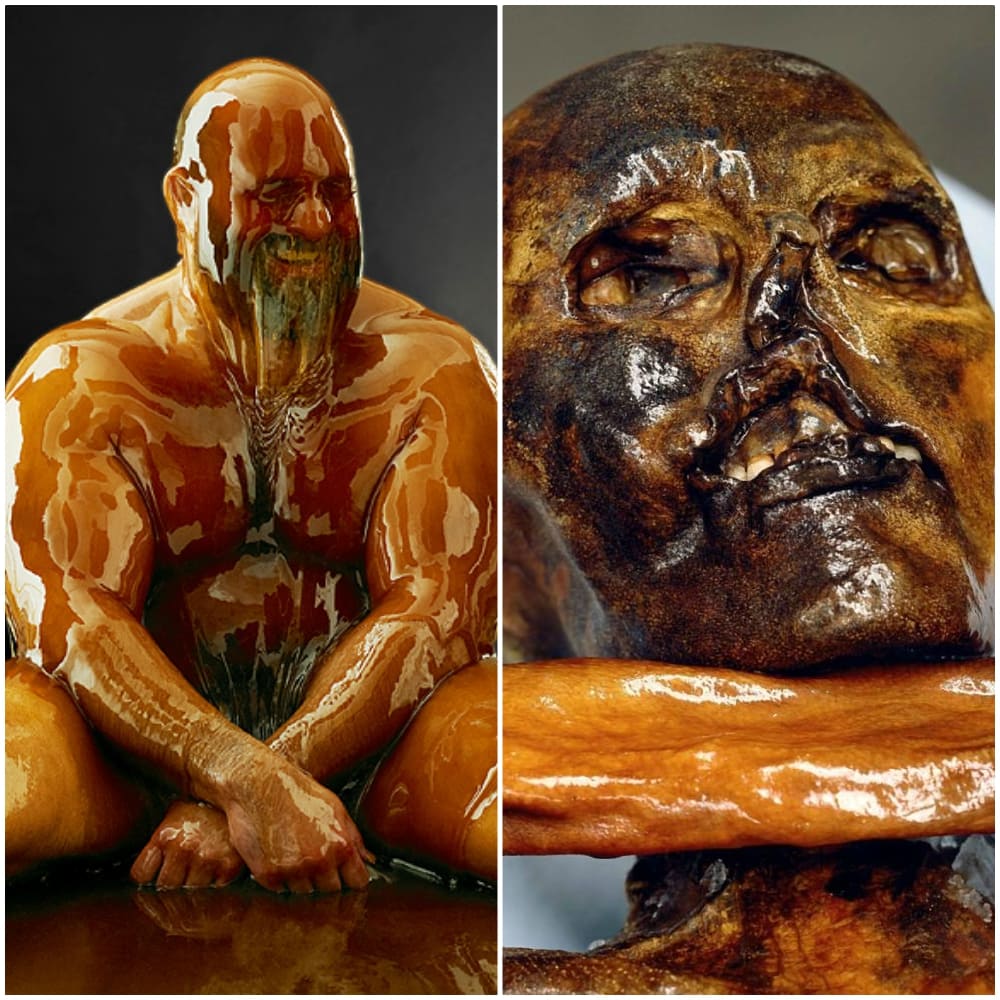
Radiation Hair Removal
Wilhelm Roentgen discovered X-rays, the applications of radiology in medicine were clear from the beginning. Already by the start of the 20th century, shortly after his discovery in 1895, women would go to specialists to get zapped by the dangerous rays for cosmetic hair removal. Although there’s been no definitive study on the long term effects this had, a 1970 study limited to New York estimated that X-ray hair removal was responsible for over 30% of cancer diagnoses at the time.
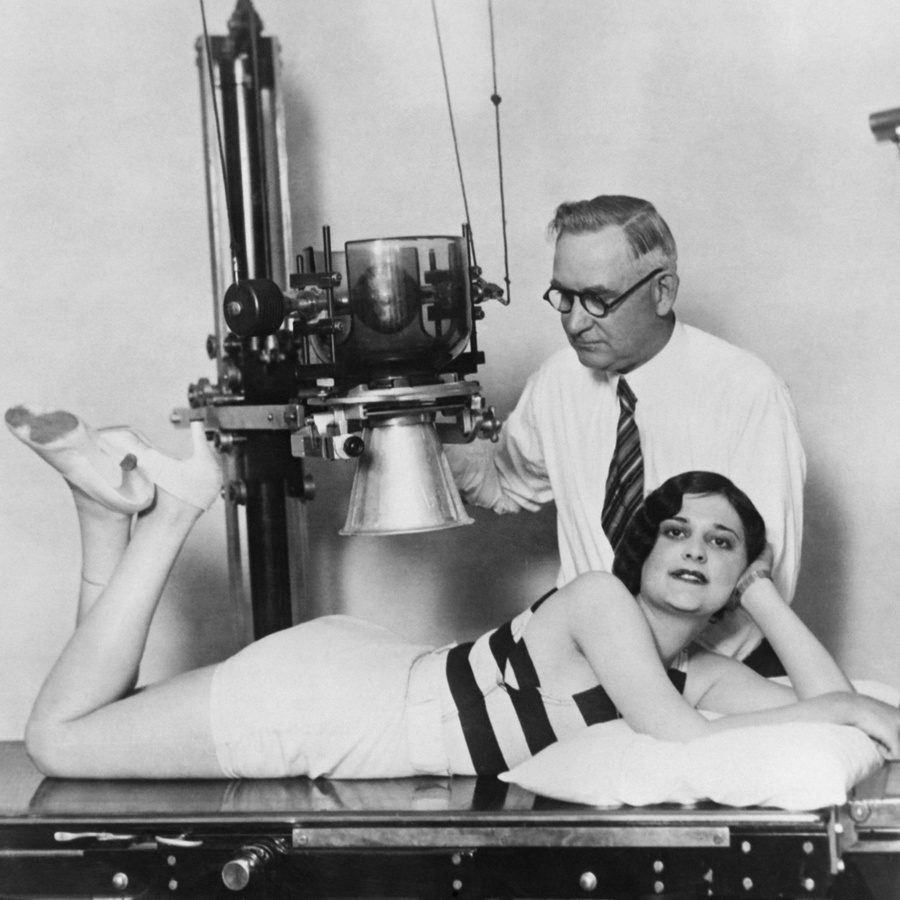
Mercury STD Treatment
There’s no cure for herpes, but we’ve gone a long way in treating it. It wasn’t until the 1940s that we knew it was caused by a virus — two different viruses, in fact. Before that, though, people would rub mercury on their painful cold sores to treat them. Little did they know that mercury will easily seep into the body from the skin and poison us. Mercury creams existed until the beginning of the 20th century, and the heavy metal was also thought to cure syphilis.
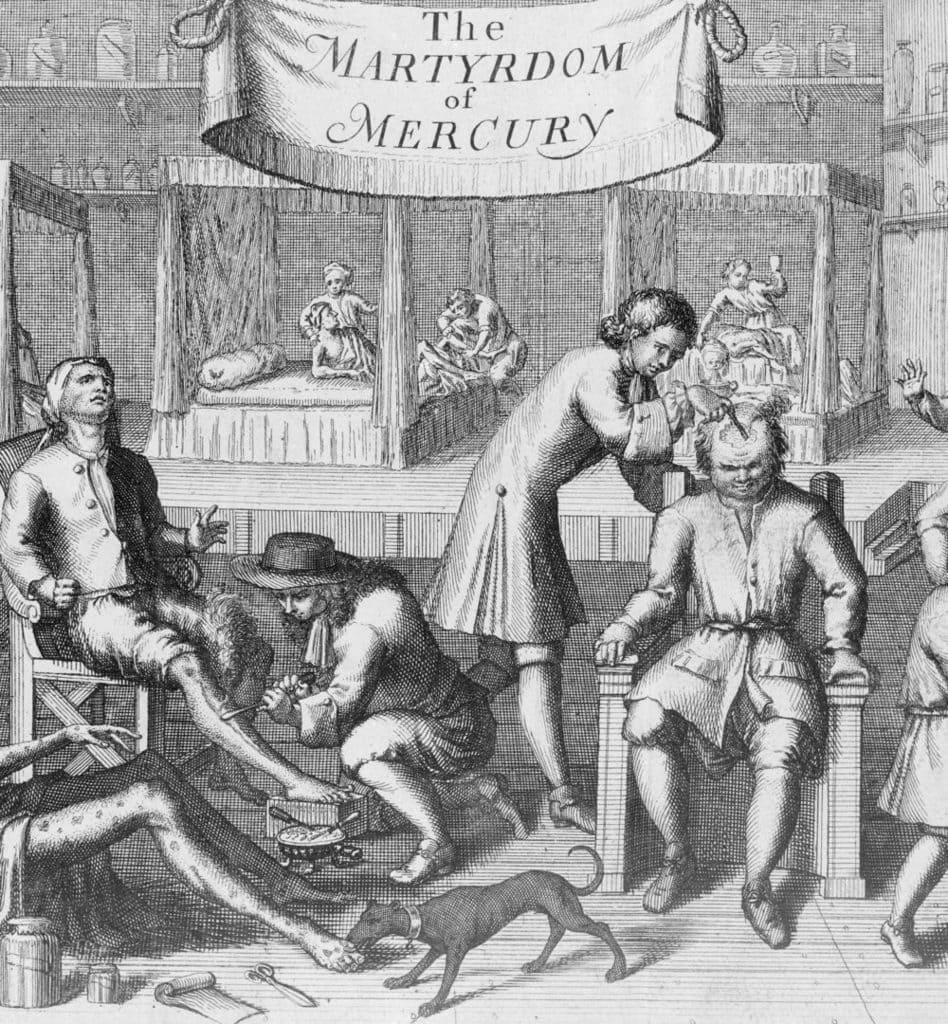
Rotten Teeth
Some health issues in the past were exacerbated on purpose as they were a sign of wealth. In Elizabethan England, for instance, rotten teeth were a status symbol because sugar, the leading cause of tooth decay and gingivitis, was such a luxury item that is could only be bought by the rich. Couple a diet high in sugar with not brushing your teeth regularly and you get a blackish-blue hue to your teeth that was the envy of the lower classes.

So Fresh, So Clean
Do you remember when we told you that the Romans used to mix baking soda with mouse brains to make toothpaste? Well, believe it or not, but that’s actually not the weirdest concoction that people made in order to brush their teeth back in the day. Ancient Greeks thought that mixing baking soda with oyster shells, crushed bones, bark, and charcoal constituted as good hygiene whereas the ancient Egyptians brushed their teeth with eggshells and the ash from ox hooves.

When Nature Calls
There’s nothing worse than getting the urge to go to the bathroom just as you’re starting to falling asleep. Centuries ago, though, people had their own solution for this — people kept miniature toilets underneath their bed. Commonly called chamber pots, people would use them whenever nature would call in the middle of the night and their unlucky maids would dispose of its contents in the morning. Now that we’re thinking about it, maybe that midnight trek down the hall doesn’t seem so bad.

Pain Is Beauty
Belladonna, Italian for “beautiful lady,” was the type of plant that women ate throughout the 16th and 17th centuries in hopes that it would enhance their beauty. Also known as the “deadly nightshade,” the Belladonna plant is highly poisonous. One side effect of this is dilated pupils, which was a highly desirable trait back in those days. That’s why women would risk congestive heart failure, hallucinations, stomach ulcers, heart issues, and gastrointestinal tract infections (among other awful symptoms) all for beauty. Then again, you know what they say — “beauty is pain.”

Imitating the Fashion Icon of the Time
At this point in the list, we think it’s safe to say that urine was used quite often in the earlier days. It’s no secret that Queen Elizabeth I was considered stylish during her reign. Aside from her wide-set eyes and pale skin, the Queen’s red hair was something that many women sought to imitate. During that time period, you’d have to subject yourself to highly toxic chemicals mixed with urine if you wanted to lighten or dye your hair. It sounds like the methods of dying and bleaching hair have undoubtedly come a long way since Elizabeth’s era.

Brushing Your Hair Was Highly Dangerous
It turns out that brushing your hair before the 1930s was actually pretty dangerous. That’s because combs and brushes along with other innocuous items were made with celluloid — transparent flammable plastic that’s highly combustible when hot so much so that it doesn’t even have to be touched by a flame to actually catch fire. A few people even lost their lives while combing their beards or hair. Despite the hazard, celluloid was used in these types of products for many years until it was finally replaced with safer plastic materials.
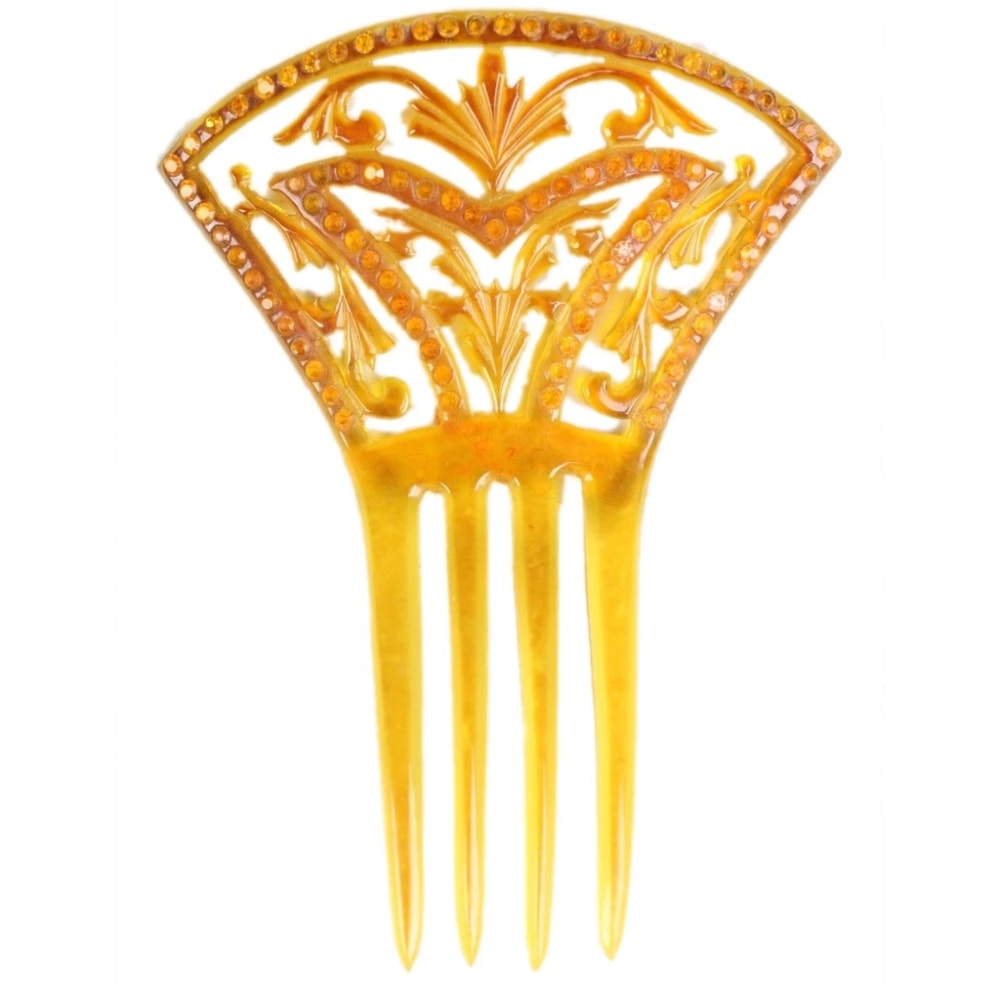
The Sacrifice for Tall Hair
Tall hairstyles were very much “in” during the 1700s. In order for their hair to get that look, women used lard and refrained from washing their hair for weeks at a time. To mask the smell of the animal fat, it was often mixed with fragrances before women applied it to their hair. While this may not sound like the strangest hygienic method people had back in the day, lard in unwashed hair can have some seriously alarming consequences like attracting insects. Call us crazy but we certainly wouldn’t want any creepy-crawlies roaming our scalp…
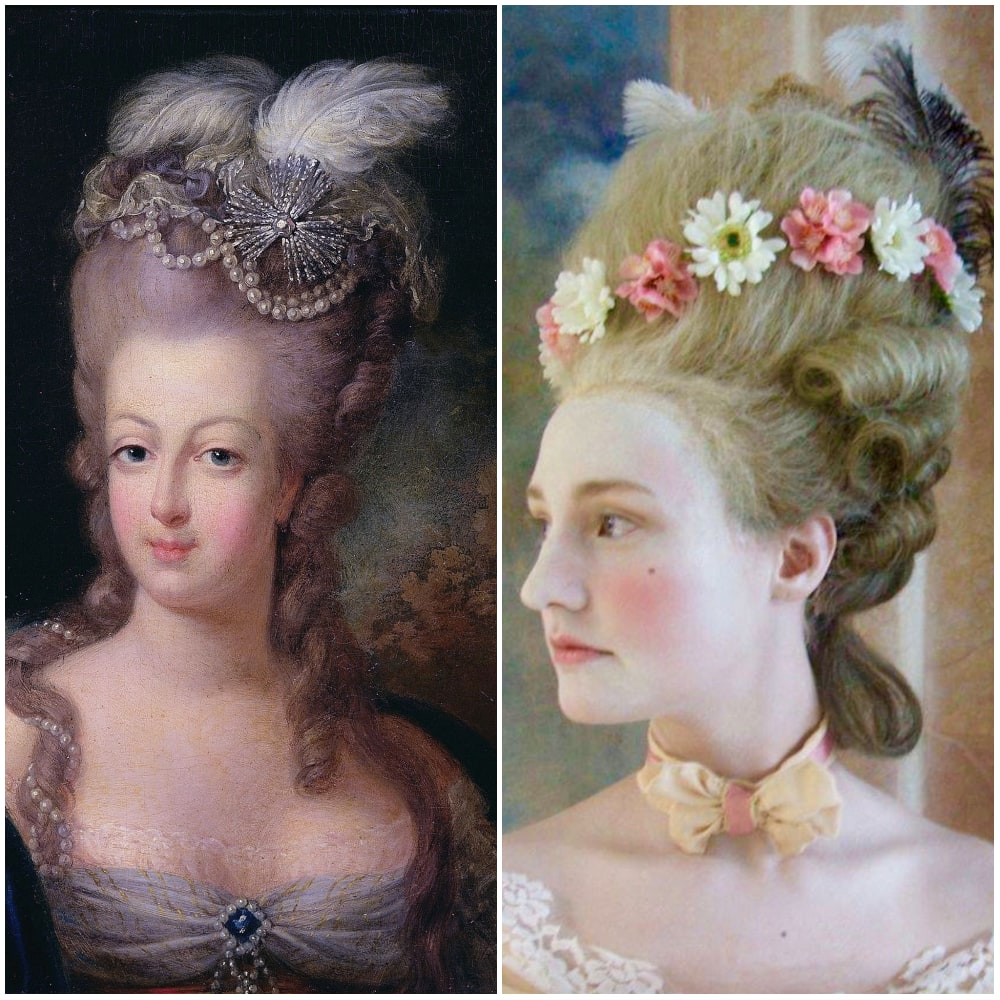
Teeth Blackening
Nowadays, all people want is a nice set of pearly white teeth. For centuries, though, teeth blackening existed and was popular among many in Southeast Asia and Oceanic cultures, Japan, India, and even among minorities in southern China. It was even done among some groups in northern Peru and Ecuador. At that point in history, shiny pitch black teeth were seen as beautiful. While it may not coincide with today’s beauty standards, there was actually a functional purpose behind the tradition — coating teeth in the lacquer actually protected them from decay.

Bloodletting
Believe it or not but bloodletting — or withdrawing blood — was a common practice to treat all types of sicknesses up until the end of the 19th century. If you were able to afford it, they’d use leeches to suck your blood. If you didn’t have the money, on the other hand, they’d just slice open a vein and let your blood drip out. Although medical professionals today understand that this method mostly did more harm than good, doctors during that time believed that blood was stagnant and held most ailments inside it.
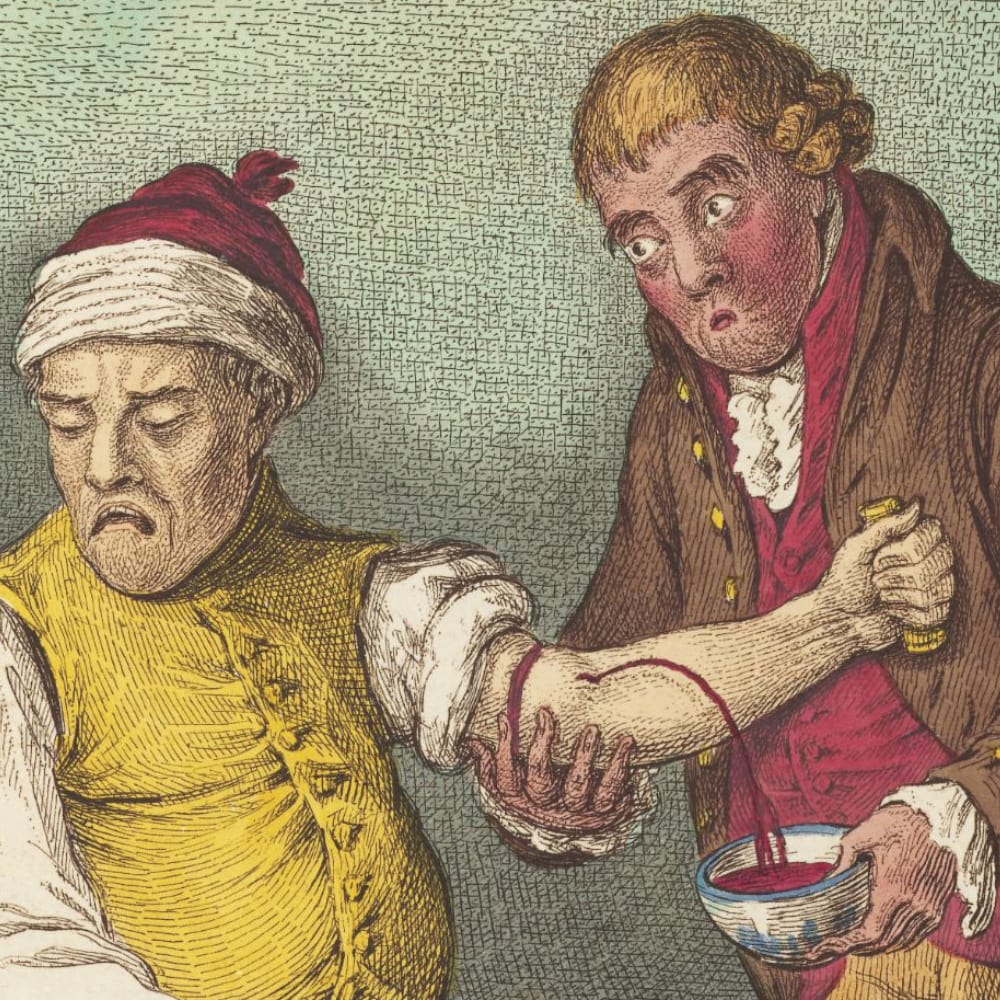
The Tapeworm Diet
Can you imagine eating anything you wanted and not gaining a single pound? Yeah, neither can we. We’ve all heard of some strange diets throughout the years but this one tops them all. During the early 20th century, doctors began advertising that very pitch for tapeworm weight-loss pills. They theorized that the tapeworms would reach maturity in the intestines and absorb food, causing weight loss along with diarrhea and vomiting. Aside from that, ingesting the worm could also cause abdominal as well as rectal complications along with other illnesses including meningitis, epilepsy, dementia, and more.
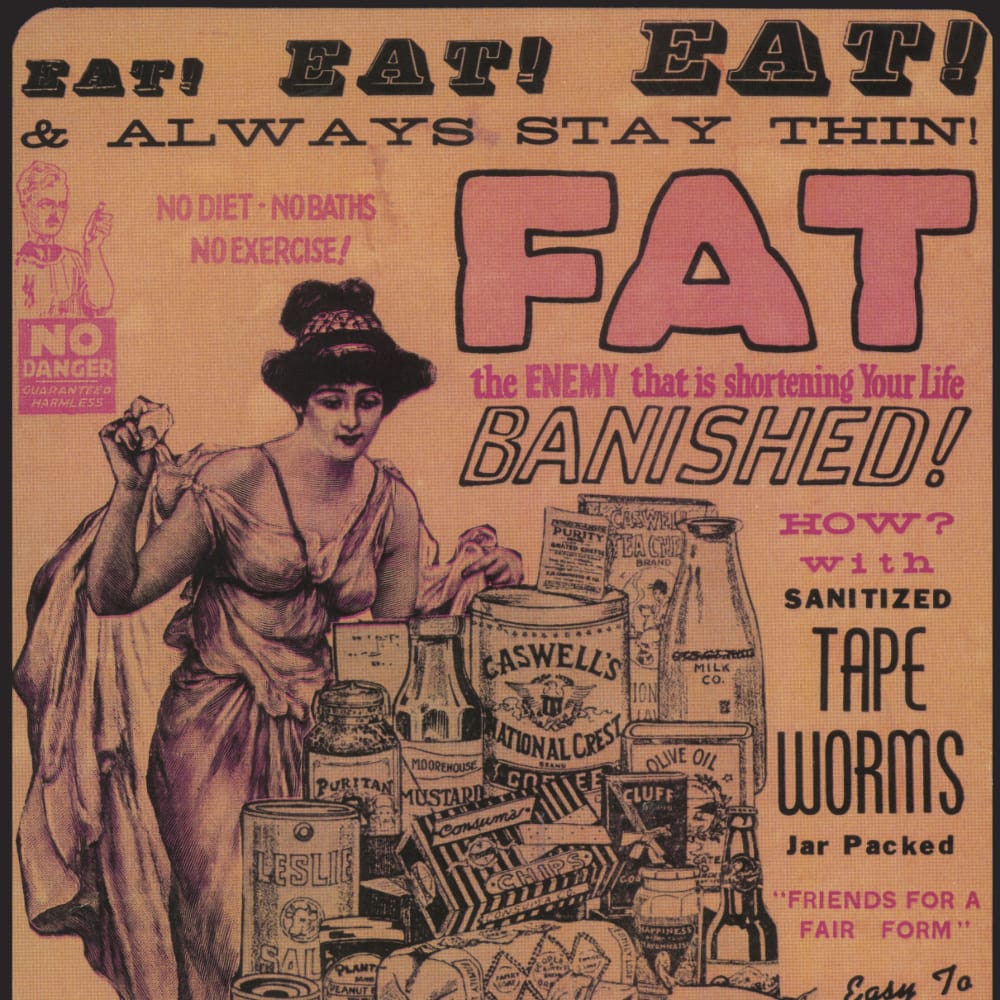
Cauterization
We’ve already established that medical practices back in the day weren’t what they are today. In fact, medical practices were actually pretty brutal during the medieval period. In order to stop heavy bleeding (i.e. during an amputation), for example, cauterization was used by applying a piece of heated metal on the wound. While it did stop the bleeding and prevent infections, it also ultimately caused extensive and painful tissue damage. Cauterization was also used in cases of tooth extraction and as a treatment for mental illness.
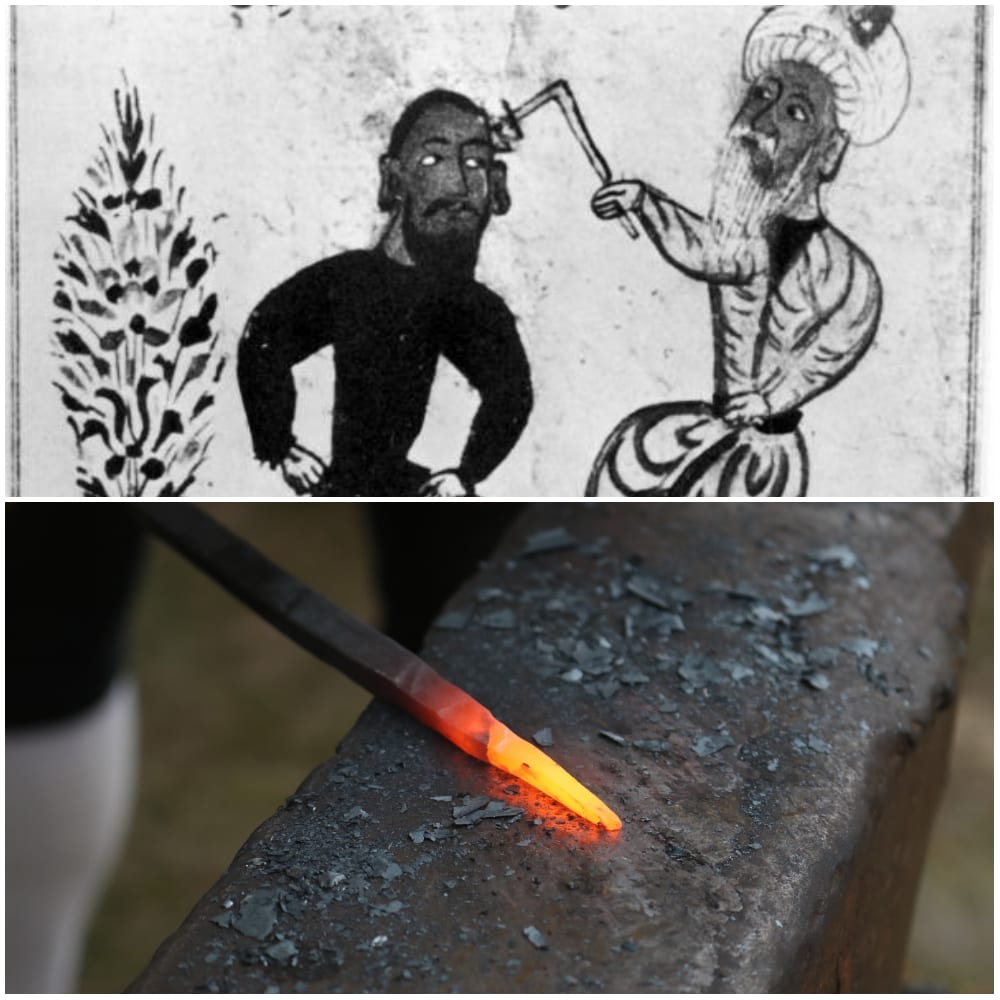
Bad Smells Caused Illnesses
The miasma theory of disease originated during the Middle Ages and actually persisted for centuries. Miasma is a poisonous vapor or mist made up of particles from decomposing material that was believed to cause disease and could be identified by its foul smell. In other words, doctors theorized that illnesses were caused by bad smells. In fact, during the Great Plague of 1665, doctors wore beak-nosed masks filled with sweet-smelling flowers in order to keep out the poisonous miasmas. It was because of this reasoning that many doctors failed to adopt new practices like washing their hands between patients.

Toothaches
It seems like people seriously had an obsession with using mice for hygiene methods back in the day. In fact, ancient Egyptians believed that slicing a dead mouse in half and placing it on the teeth or gums while it was still warm would ease toothache. In some cases, people even blended mashed mice with other ingredients and applied the resulting paste to painful spots. The Egyptians also made primitive replacements for lost teeth with shells or wood.

Grey Hair No More!
This may be hard to believe but the term “radioactive” used to be a huge selling point before the longterm health effects were actually learned and understood. During the 1920s, caradium was a very popular hair restorer intended to treat grey hair using a secret ingredient — radioactive radium. Yeah…people didn’t realize just how deadly this was. Anyway, radium was discovered by Marie Curie at the end of the 19th century and was largely responsible for her two Nobel Prizes in physics along with her untimely death, which was likely caused by radiation poisoning.

Bed Bugs
Be honest — even reading the word, “bed bug” sent shivers down your spine. While we can all admit that bed bugs aren’t necessarily our friends nowadays, they weren’t as hated back in the day. In fact, during those ages, bed bugs were crushed and made into a potion that was used as an attempt to cure common ailments. Aside from that, Ancient Romans and Greeks burned them to make leeches release their hold while Egyptians would drink them to heal snake bites.
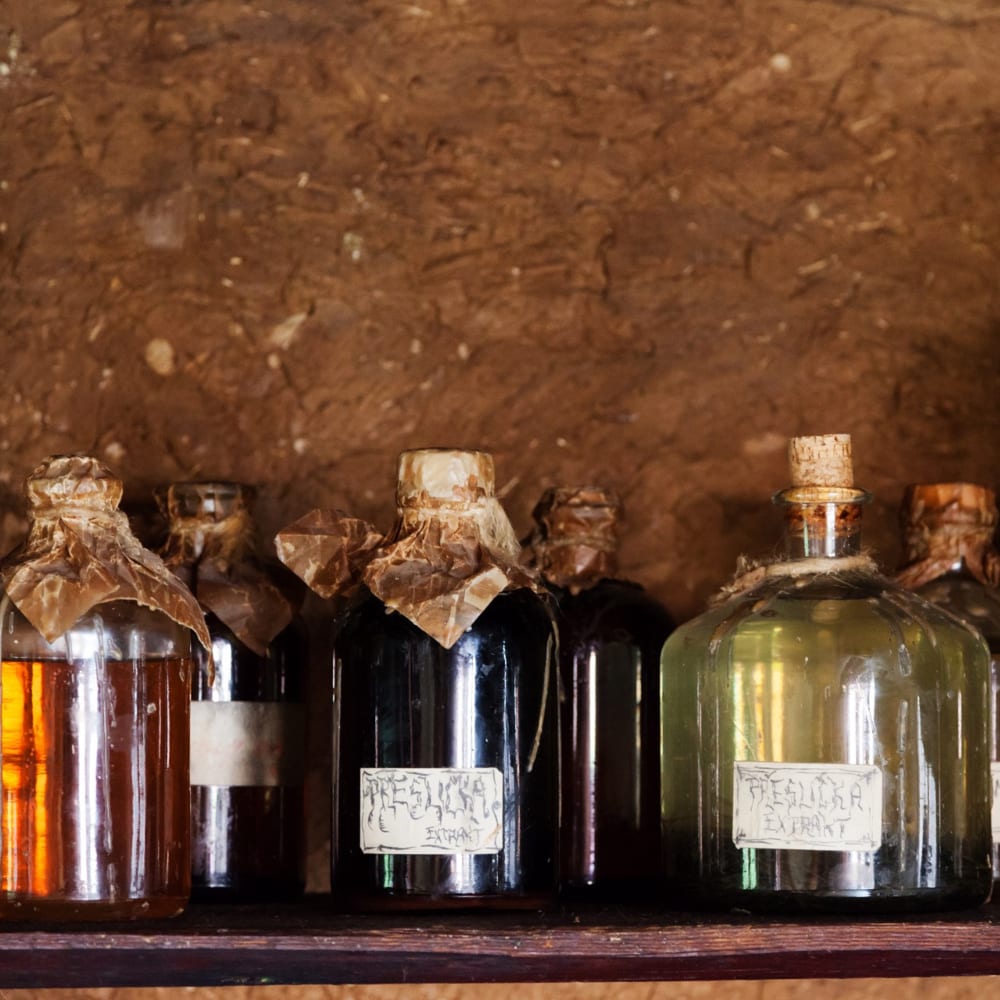
Plumbum
Have any idea why we call it plumbing? Dating back to the Roman Empire, “plumber” comes from the Latin word ‘plumbum,’ which just means lead. Once upon a time, the toxic heavy metal was used for basically any and all water-related functions — pipes, reservoirs, bathtubs, etc. Since it has such a low melting point, lead can be easily shaped and makes for a great waterproof seal. When it’s longterm health risks were discovered, though, the use of lead in contact with drinking water was discontinued.
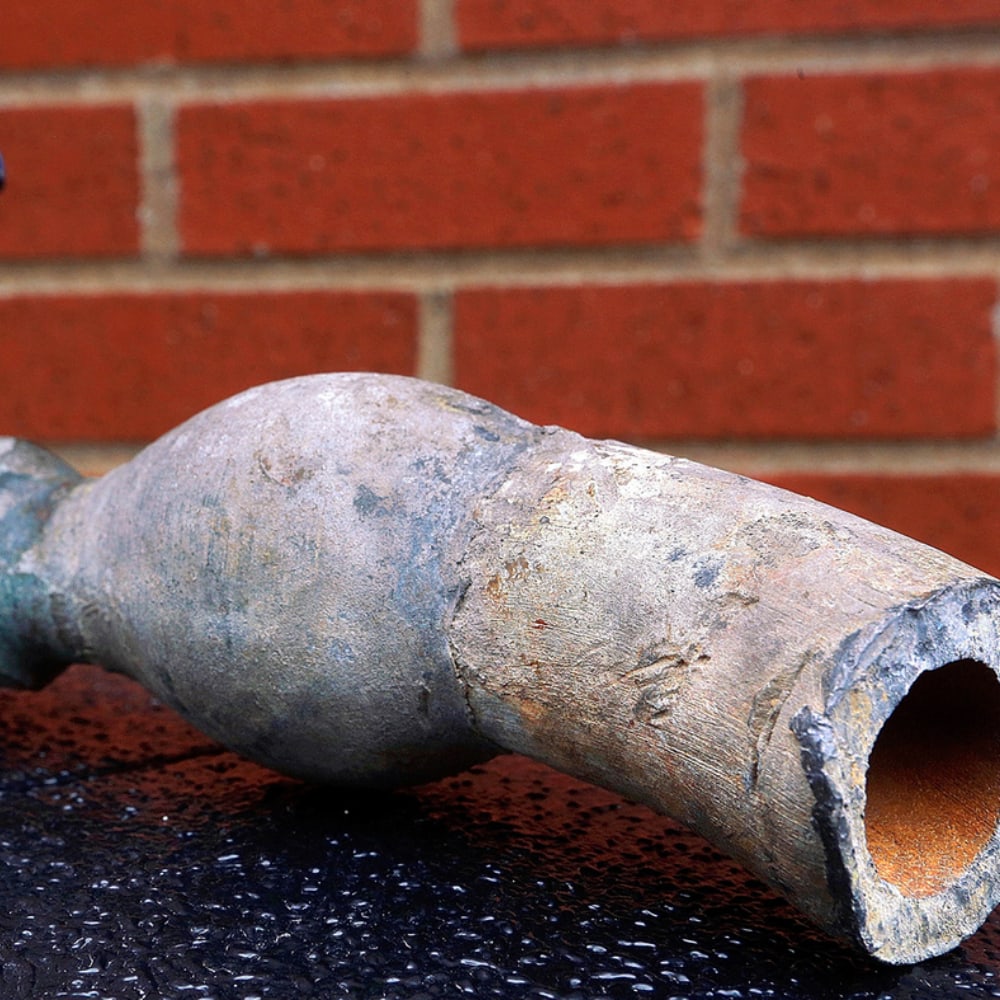
Dead Man Dentures
One of the freakiest facts of the not-so-distant past is how some of the vilest, most macabre things we can imagine today were treated as if they were the most normal thing in the world. As rotting teeth were such a big problem, people were in need of dentures, but what sort of material would they use. Instead of fake teeth, though, dentists often used real teeth, which were sometimes harvested from the bodies of the dead.
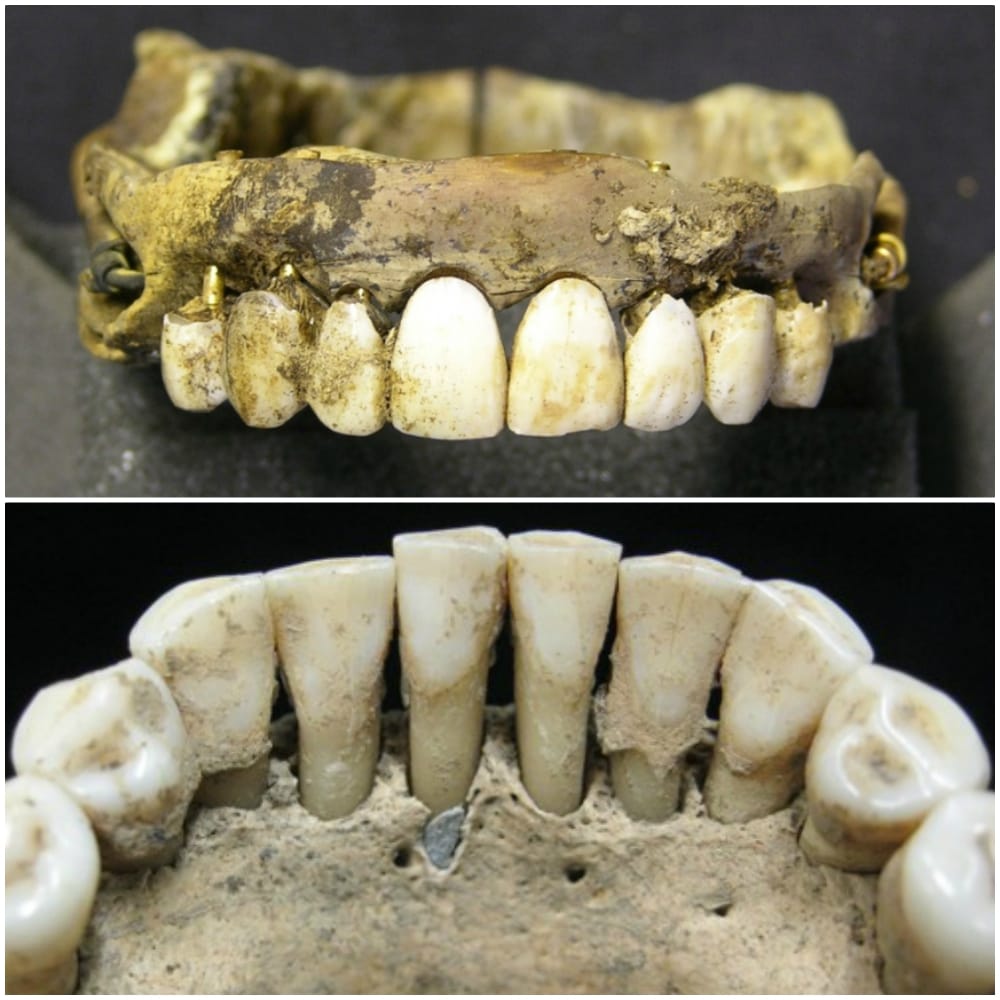
Snail Slime for Sore Throats
Know that feeling you get in the back of your throat when you’re getting a sore throat? Nowadays to maintain our health, we’ll reach for mouthwash, cough lozenges, or even Dayquil — but do you also know that nasty, gluey goo that snails leave behind? People used this to treat sore throats and, in fact, still do. If you ever are in Germany and buy over-the-counter Shnecken cough syrup, you should know that snail extract is the active ingredient.

Surprisingly Useful Waste
While it may be gross to us now, people haven’t always been so put off by pee and poo that we refuse to use refuse. Traditionally one of the most readily available raw materials used to make things like gunpowder, aged urine (called lant) was also used to clean floors, remove stains, and more. You might wonder how people managed to step inside a recently-cleaned room, but note that they also used aged urine, which has heightened levels of ammonia, to whiten their teeth and wash their face. So they probably didn’t mind the smell.
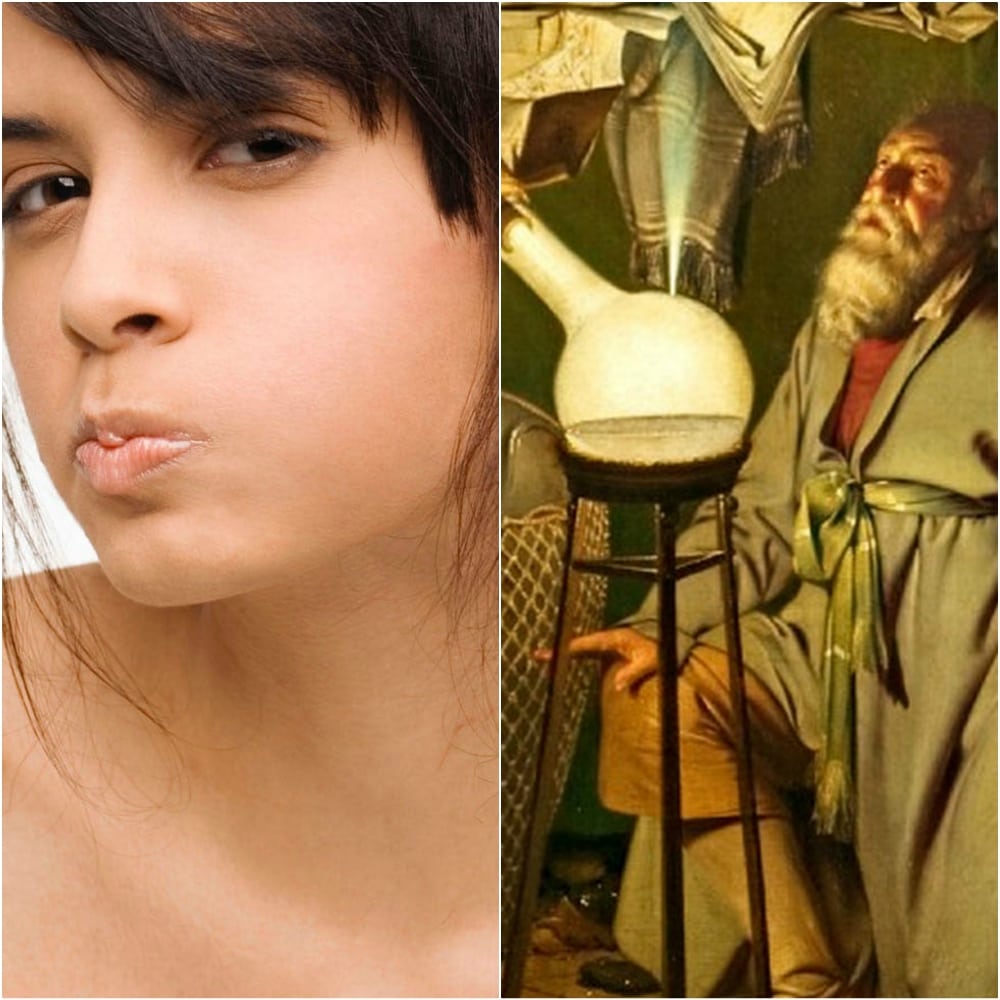
Groom of the Stool
Whether they had toilet paper or not, people have had to go since the beginning of time. Apropos wiping throughout history, long before the invention of toilet paper this was something servants were expected to do sometimes: kings up until the Victorian era used to have a servant called the Groom of the King’s Close Stool. This servant was one of the closest people to the King, sometimes figuratively but always literally, as his job was to wipe the royal bottom.
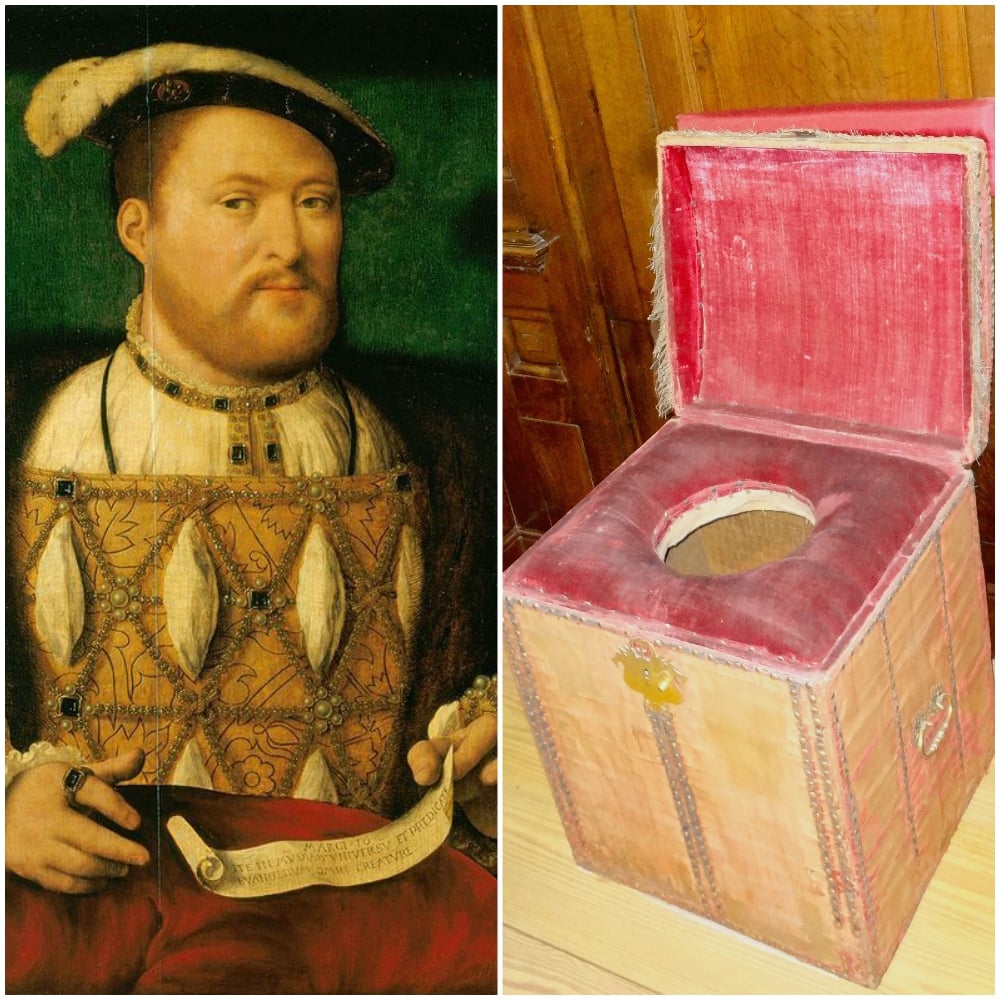
No Silverware
People didn’t shower nearly as much as we do, but that wasn’t the least of their problems. People didn’t wash their hands, as they didn’t know that washing can prevent disease by removing disease-causing organisms lingering on their fingers. To make matters worse, they didn’t use silverware and often ate with their hands. Nowadays we wash everything from our hands to our dishes, but back then there was no telling when your filthy hands touching food would make you sick.
